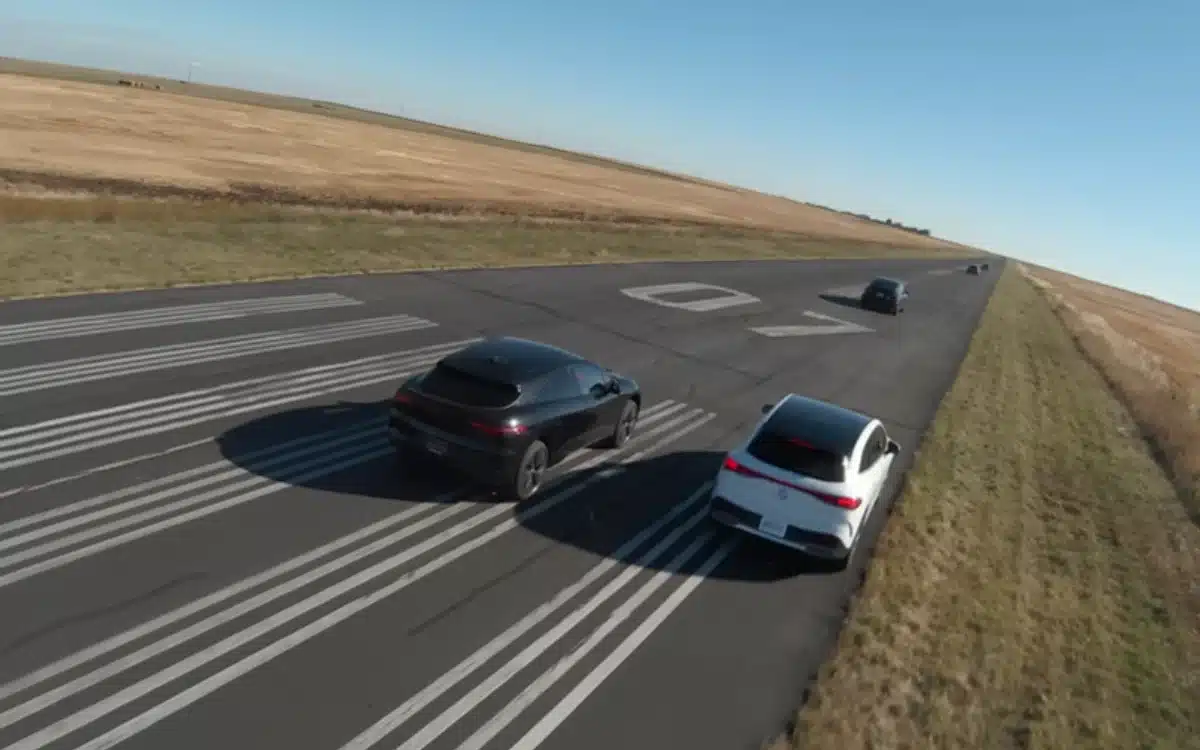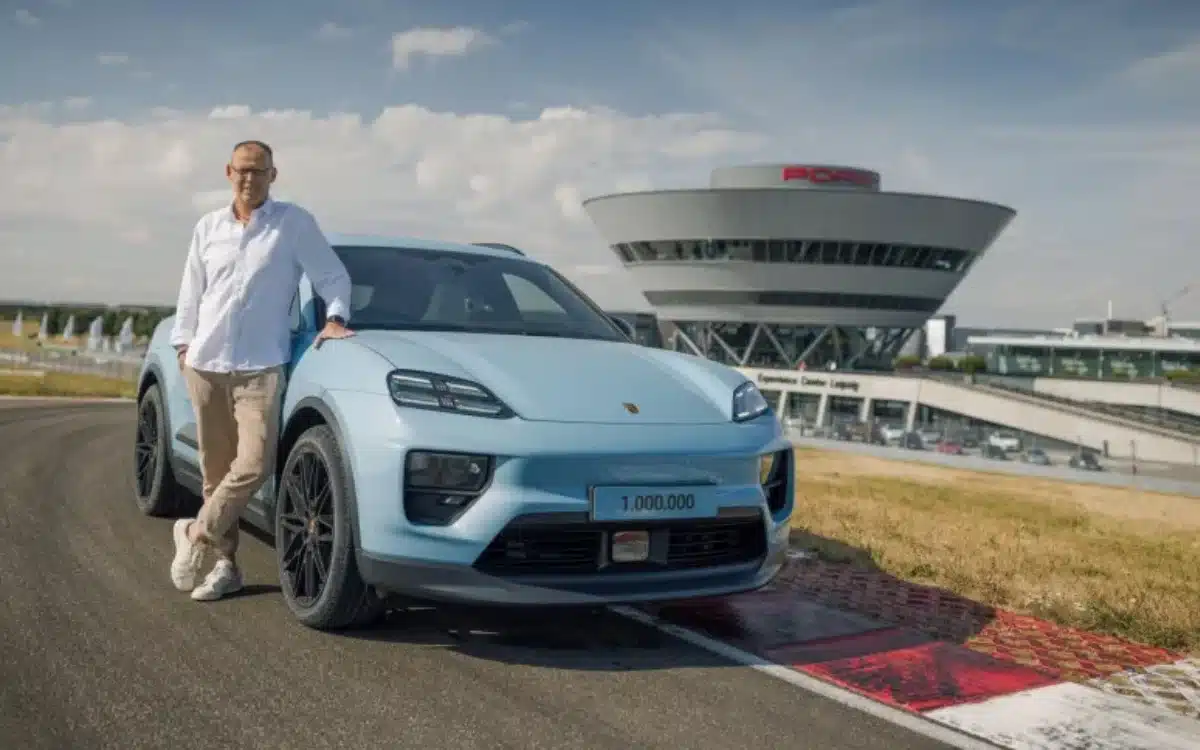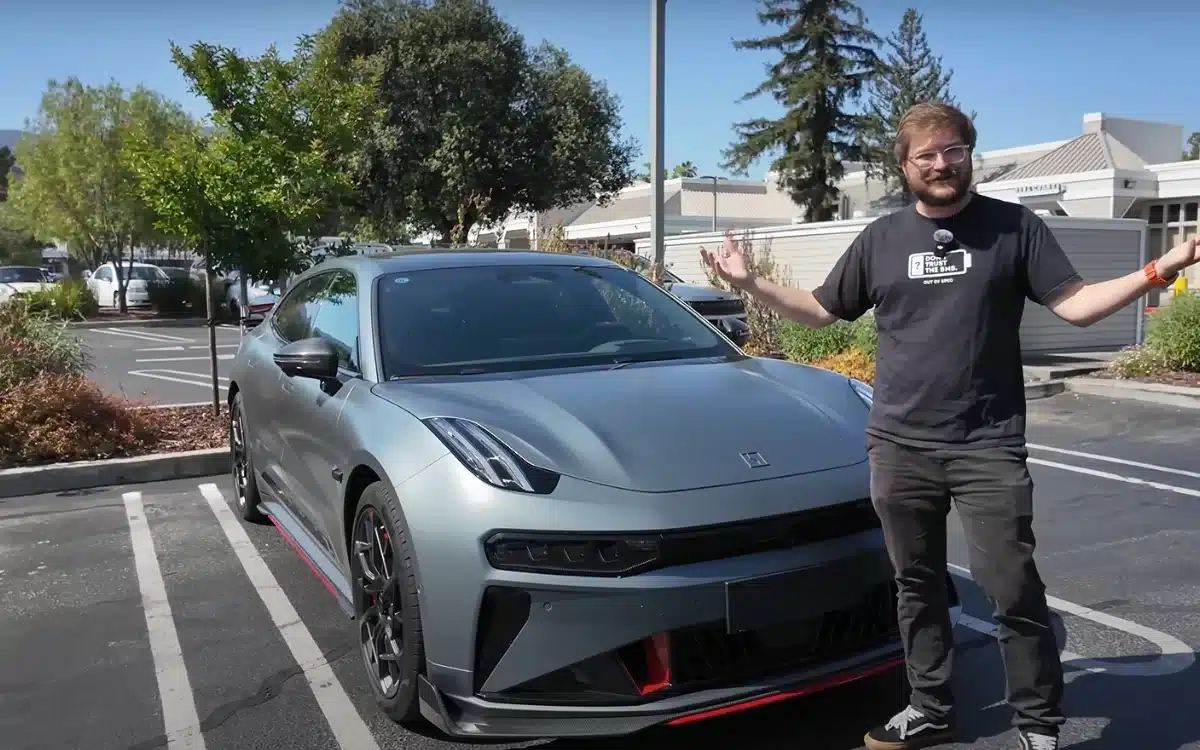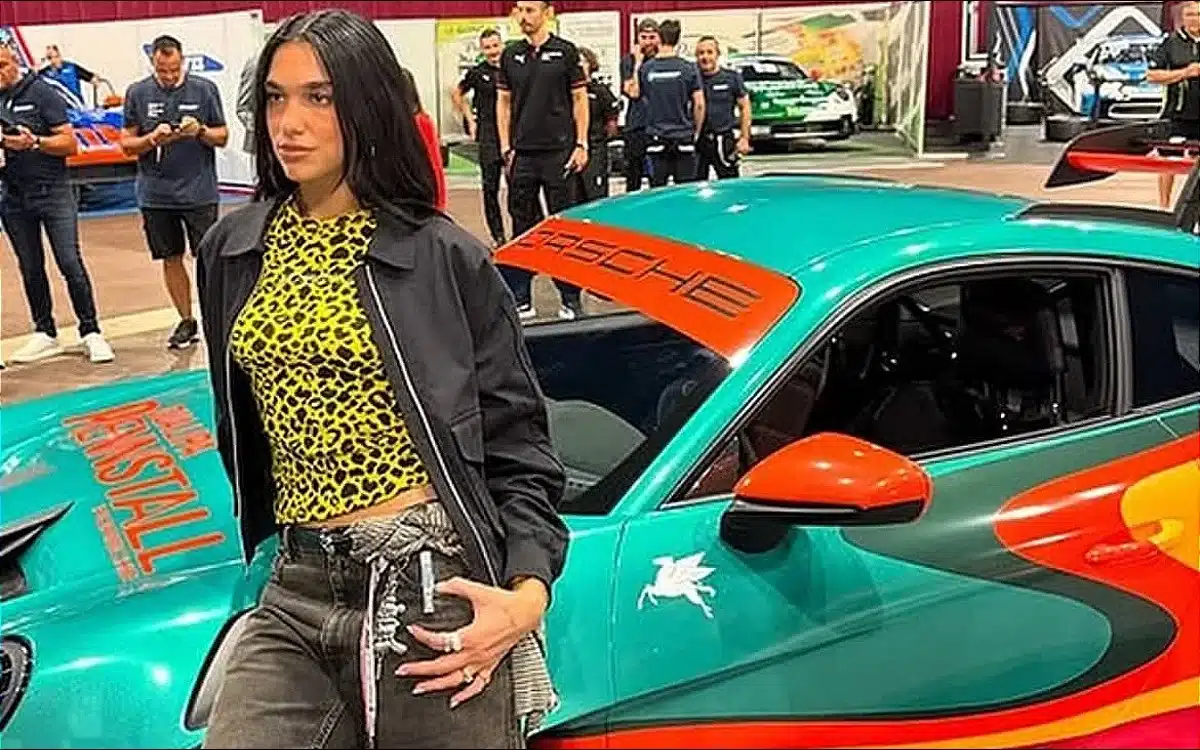How Bugatti built a next-gen 1,800hp hypercar with AI-shaped parts and minimal screens
Bugatti is aiming for a timeless look for the Tourbillon The post How Bugatti built a next-gen 1,800hp hypercar with AI-shaped parts and minimal screens appeared first on Supercar Blondie.
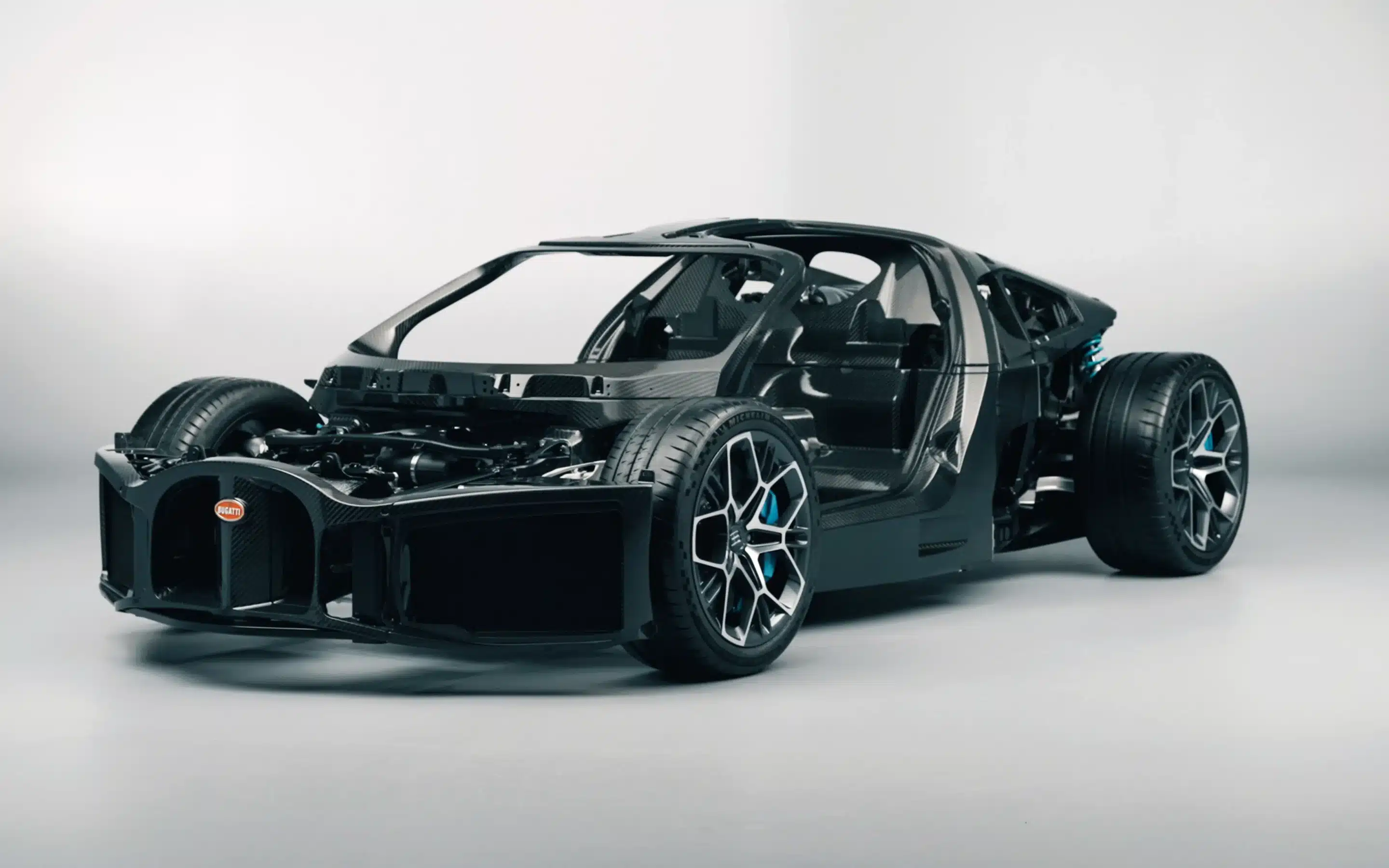
Bugatti is trading traditional touchscreen tech for a hypercar with AI-engineered construction and minimal screens.
The model, named the Tourbillon, combines a newly built naturally aspirated V16 engine with three electric motors.
It delivers 1,800 horsepower and is built around a battery-integrated carbon monocoque.
A closer look reveals how this design language plays out in hardware, not software.
VISIT SBX CARS – View live supercar auctions powered by Supercar Blondie
Hypercar with AI-engineered parts
Bugatti used computer-driven design tools to help shape many of the Tourbillon’s core parts.
These tools rely on AI to strip away any material that isn’t needed, leaving behind strong, lightweight structures that still do their job.
This process, known as topological optimization, was used for components like the suspension arms, parts of the car’s frame, and internal supports.
The powertrain combines a newly built 8.3-liter V16 engine, developed with Cosworth, and three electric motors.
To make room for the car’s underbody airflow system, the engine sits at a slight angle.
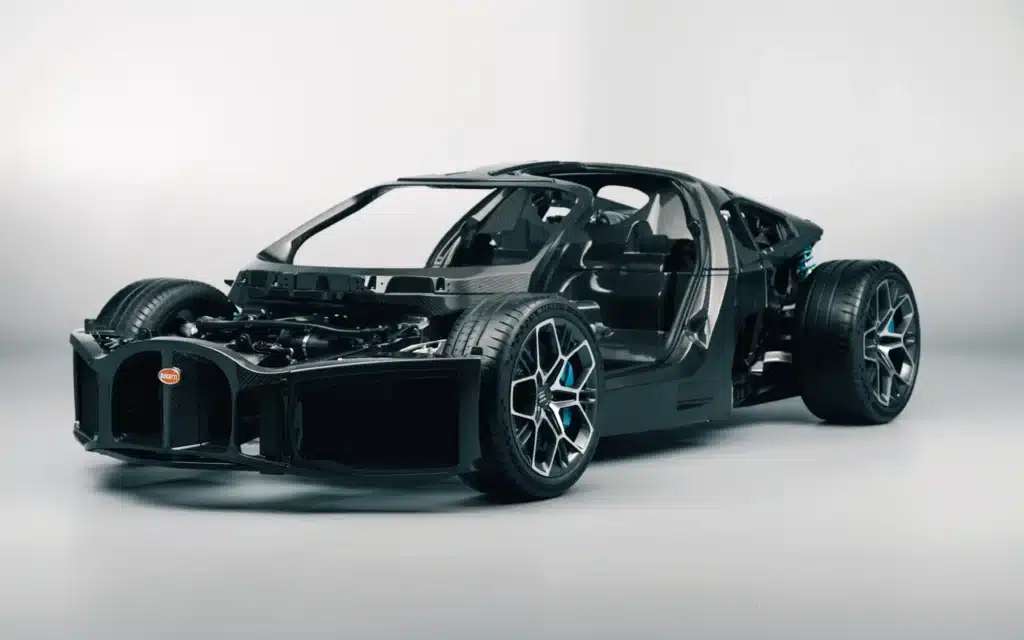
This allows a set of channels underneath the floor to create downforce, helping the car stay planted at high speeds without relying on a rear wing.
The 25 kWh battery is built into the carbon chassis, supporting both short electric-only driving and the overall hybrid system.
No elements from the Chiron were reused. Everything from the cooling system to the way air moves through the car was redesigned specifically for this platform.
Bugatti has confirmed the hypercar with AI will enter production in 2026, limited to 250 units worldwide.
Interior layout reinforces long-term usability with minimal screens
Inside, the Tourbillon departs from industry norms by using minimal screens and mechanical instrumentation.
The main display is a physical cluster designed in collaboration with Swiss watchmakers.
It is suspended in the center of the dashboard and constructed from metal and crystal, with no digital overlay or software interface.
Most functions are controlled via analog switches and dials.
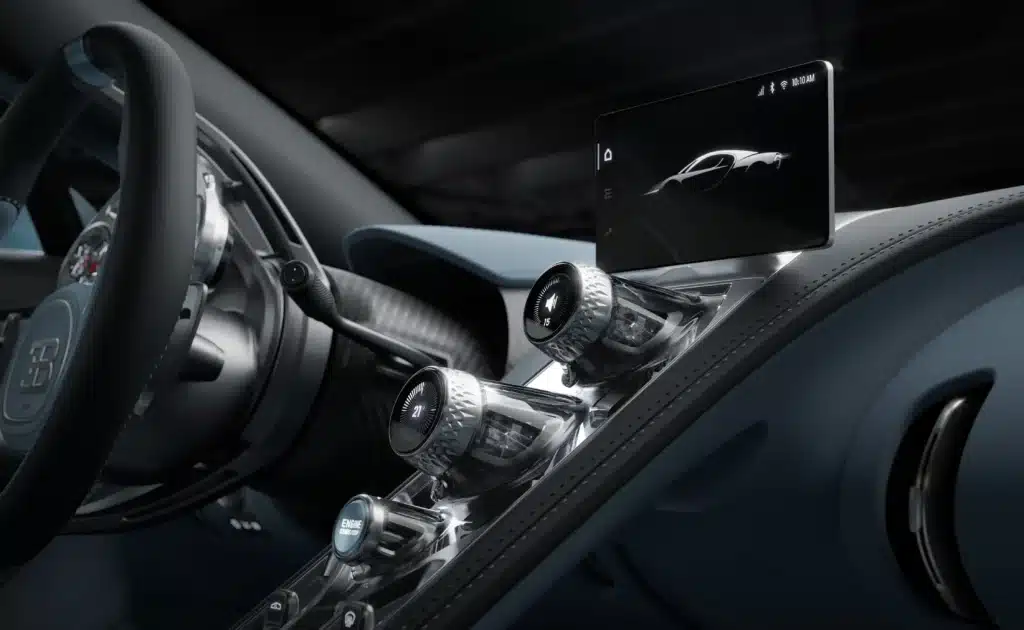
This approach was intended to prevent the cabin from becoming visually outdated as display technologies evolve.
Bugatti states that screens often lose relevance quickly, which can affect both user experience and perceived value over time.
A small retractable screen is included for navigation and reversing, but it remains hidden during regular driving.
The rest of the interior uses exposed carbon fiber, aluminium, and leather, with no simulated textures or digital trim effects.
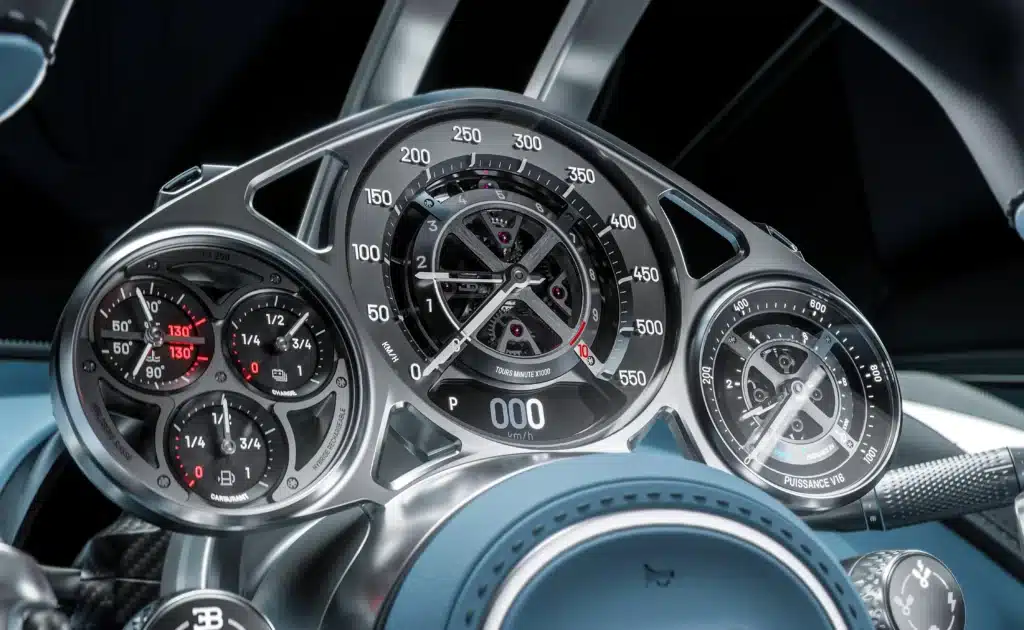
As a next-gen hypercar, the Tourbillon relies on AI-engineered systems and minimal screens to separate itself from digitally overloaded rivals.
By prioritizing structural performance and analog control, Bugatti’s next-gen hypercar avoids many of the systems that typically date high-performance vehicles.
The production model brings together all of these systems under one platform, set for release in 2026.
Click the star icon next to supercarblondie.com in Google Search to stay ahead of the curve on the latest and greatest supercars, hypercars, and ground-breaking technology.The post How Bugatti built a next-gen 1,800hp hypercar with AI-shaped parts and minimal screens appeared first on Supercar Blondie.
What's Your Reaction?













